|
|
We introduce Handwork, traditional crafts, folk art and traditional foods
made by craftsmen in the Tohoku region of Japan ,
that have been handed down from generation to generation,
and sell them by mail order .
・・・We advocate Life with Japanese beauty.・・・ |
| Handicrafts in Tsugaru region 20 industries 25 workshops |
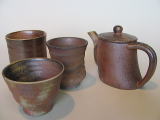
Tsugaru Kanayama ware |
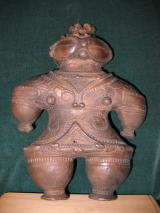
earthen figure
Yumeno Workshop |
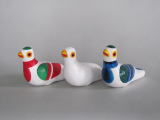
Shitakawara
-yaki humanoid
Masashi Abo |
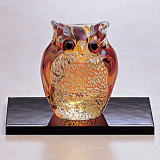
Tsugaru BidouraHokuyo
Glass Co. |
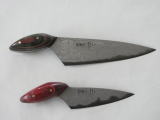
Tsugaru Forged Knives
Nikara
Knife Forging Co. |
.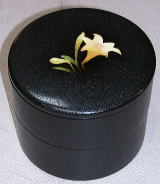
Tsugaru lacquerware
Fujino lacquerware |

Tsugaru lacquerware
Lacquer Studio Miya |

Tsugaru lacquerware
Lacquer, craft, Ken |
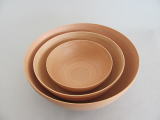
BUNACO |

CHIT●SE
Kimura Mokhin Seisakusho
|

Tsugaru Sakiori weaving
Atelier Moeki |

Tsugaru small cloth embroidery
Hirosaki Kogin Institute |
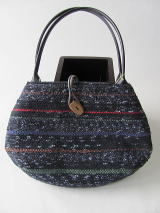
Tsugaru Sakiori weaving
Sakiori Weaving Studio Ponte |
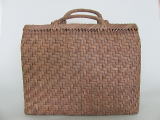
Akebi vine work
Miyamoto Craft Co. |
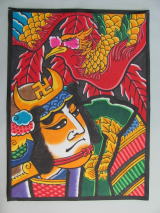
Tsugaru kite paintingSyukou Yamauchi |
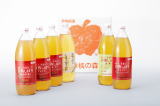
Hyuma apple
JA Soma Village |
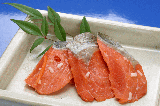
sushi with rice
Yamatomi Foods Co. |

pickle of wild vegetables
Iwaki-ya (shop) |

salted apple and
soba noodles
Hikoan |
|
|
|
|
|
- Tsugaru is also my second home town. And it's a place with a fragrant aroma.Perhaps
this impression is due to the fact that being transferred to Tsugaru as
a single employee has marked a significant time in my life.
- I've experienced a lot of things during my seven years here.
I was in my early 40s, so I had a lot of immaturity in terms of my work.
Maybe it's because I'm impatient, but as an experience, it's too much.
Also, I was able to enjoy the beautiful scenery of Aomori, which is rich in nature.
The apple fields on the terraces were a wonderful sight, both in bloom
and in the flutter of the fruit.
And humanity.
- There are people (craftsman)who work with their hands in the network of Tsugaru for seven years.
- At the Industrial Experiment Station were Mr. Takeshi Sato, the master
of Tsugaru lacquerware, Mr. Okabe Hirosaki Industrial Experiment Station,
and Mr. Yoshio Mochizuki, an old friend of Hirosaki Industrial Experiment
Station.
- In addition, I did business with Mr. Seiji Narita of the Tsugaru Kogin
Research Institute, and in the field of literature, Ms. Kimu Sato and the
members of Hanakurabu. The interaction with the people of the Hirosaki
Gonin-kai was also a great networking opportunity. In that sense, there
are many handicrafts that we have not yet been able to introduce to you,
so we will do our best to introduce them to you.
- "Ms.Kim Sato is a professor at Hirosaki University and cousin of Hachiro
Sato, the niece of the famous Koroku Sato."
|
| Tsugaru (region) |
- The Tsugaru region is the name given to the western part of what is now Aomori Prefecture.
It roughly corresponds to the area controlled by the Tsugaru clan (Hirosaki and Kuroishi clans) and Tsugaru County during the clan's administration.
It is different from the alias "Tsugaru Province" of Mutsu Province (all of Aomori Prefecture and the northwestern part of Iwate Prefecture) after the division.
-
The Tsugaru region in the broadest sense of the word is composed of three districts: the "TYU-KOU-NAN-KOKU District" in the south centered on Hirosaki City, the "Five Northwest Districts" in the northwest centered on Goshogawara City, and the "TOU-SEI District" in the northeast centered on Aomori City.
Because of the historical expansion of the area called Tsugaru from the
southern part of the Tsugaru Plain, the center of the area is seen as the
Nakahiro-Nankoku district, and sometimes only the Nakahiro-Nankoku district
or the two districts, Nakahiro-Nankoku and Seihoku-Go, are referred to
as the Tsugaru region in a narrower sense.
When used in a narrower sense, the East Blue District is referred to as
the "Aomori region" and so on.
It may also be recognized as a regional area centered on the Tsugaru Plain created by the Iwaki River.
The area from the Five Northwest Districts to the Tsugaru Peninsula is also called Okutsugaru.
-
The Natsudomari Peninsula ( Hiranai Town area) was part of Nukabe County until the beginning of the Kamakura Period, and the Mutsu Bay coast (Aomori City and Higashi Tsugaru County area) was called Togahama, and was sometimes not included in Tsugaru until the Middle Ages, but after the modern period Tsugaru County was established and became part of it.
-
It is estimated that the southeastern region (former Iwasaki-mura area)
was part of Hiyama County in Dewa Province until the Middle Ages, but it
became Tsugaru territory in 1603 through negotiations between the Tsugaru
and Satake clans.
- The first historical description of the area is from the first year of
Emperor Saimei in 655 (Nihon Shoki), at which time it was written "Tsugari".
In addition, the name "Tohnichi-ryu", "Tsugari", and
"Tokadome" were sometimes used.
In the Middle Ages, the area was divided into three counties, namely "Hiraga
County (Tsugaru Hiraga County)," "Hanawa County (Tsugaru Hanawa
County)," and "Inaka County (Tsugaru Inaka County)" (four
counties in the period when Yamabe County (Tsugaru Yamabe County) was divided),
and was referred to as "Tsugaru Three Counties" (or "Tsugaru
Four Counties").
- In the Kamakura period, it was ruled by the Ando clan and others, but
in the 14th century, the Nanbu clan came to rule the area.
It was ruled by the Tsugaru clan during the Warring States period.
In the early modern era, the three counties of Hiraga, Hanawa, and Rural
Counties were combined to form Tsugaru County.
After the Meiji Restoration, the city became part of Aomori Prefecture.
In 1878 (Meiji 11), it was divided into Higashitsugaru, Nishitsugaru, Minamitsugaru, Kitatsugaru, and Nakatsugaru counties.
|
| Handicrafts in Tsugaru |
Tsugaru lacquerware, Bunnako, Koginshi, Tsugaru sakiori, Akebi vine work,
Tsugaru woodwork, indigo dyeing, apple grass dyeing, Tsugaru knives, Tsugaru
ware, Tsugaru bi-droid, Tsugaru kite, Neputa picture, Iijusushi, pickled
wild vegetables, apple vinegar, Tsugaru apple (Fuji) Hirosaki Craft Association |
■top page □up |
|
2010/04/20 The homepage is now open.
Topy Planning ltd.
100-467, Toyoura-nakamachi, Nasushiobara-City, Tochigi-ken
325-0063, Japan
tel/fax +81287-62-7673 Cell phone number: +8180-5089-9227 |

